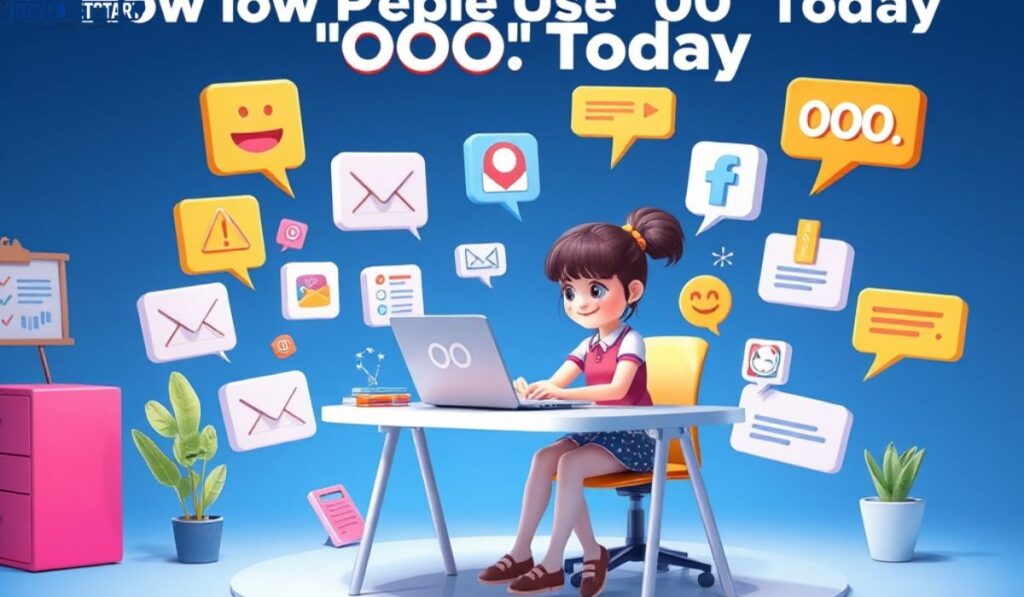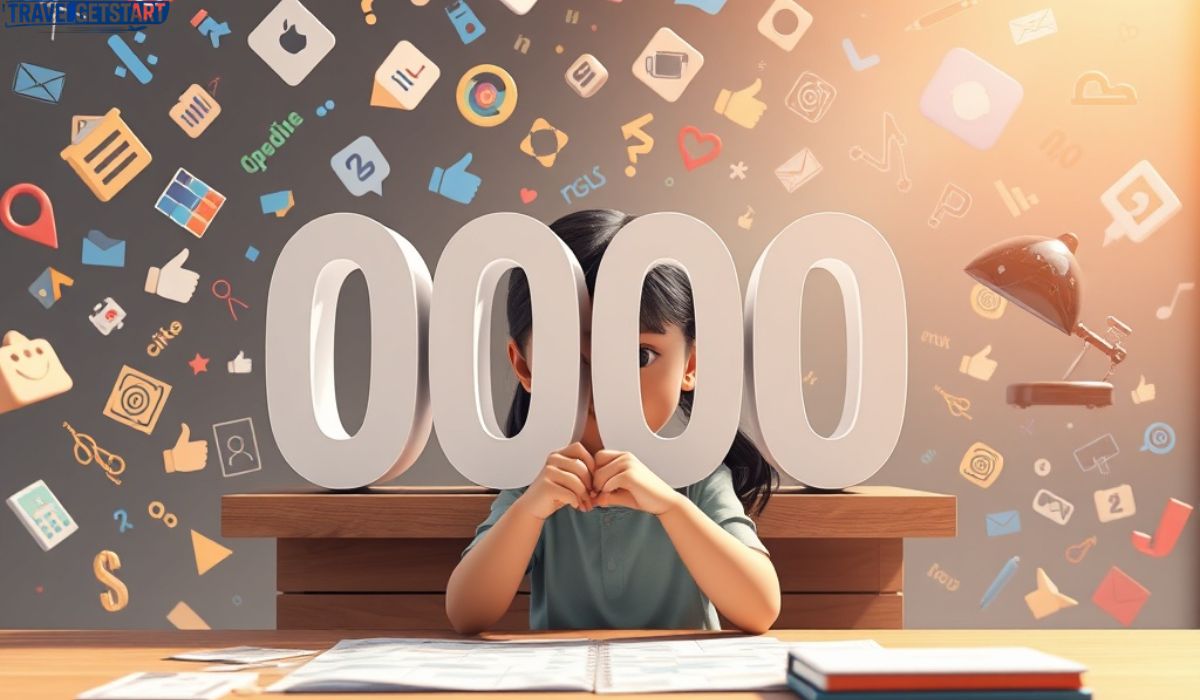In today’s fast-paced communication landscape, acronyms like “OOO” have become essential shorthand, especially in professional and digital settings. Standing for “Out of Office,” OOO signals a temporary absence and helps manage expectations in work and social interactions. But beyond its simple definition, “OOO” carries nuanced meanings depending on the context in which it’s used.
From automated email replies to casual chats, the use of OOO reflects shifting workplace cultures and attitudes toward work-life balance. Understanding its various applications and implications sheds light on how we communicate availability, boundaries, and even self-care. Decoding “OOO” thus reveals much about modern communication habits and their broader impact.
What Does “OOO” Mean?
“OOO” stands for “Out of Office,” a common phrase used to indicate someone is temporarily unavailable. It’s widely used in emails and messaging to let others know the person isn’t currently working or reachable. This simple acronym helps set clear expectations about response times.
In professional settings, OOO messages often include details about the duration of absence and alternative contacts. Beyond work, it can also imply a break from digital communication or a need for personal time. Understanding “OOO” is essential in today’s communication-heavy environment.
Whether in formal or informal contexts, “OOO” signals a pause, creating space for rest or focus away from immediate tasks. It’s become a universally recognized way to communicate unavailability quickly and effectively.
The Origin and Evolution of “OOO”
The phrase “Out of Office” dates back to traditional office culture when physical absence from the workplace needed notification. As email became widespread, the need for automated OOO replies grew, making the acronym “OOO” a quick shorthand.
With the rise of remote work and flexible schedules, OOO evolved beyond just physical absence. It now often represents mental breaks, vacations, or periods of digital detox, reflecting changing attitudes toward work-life boundaries.
Over time, “OOO” has also entered casual conversation and social media, broadening its use beyond professional contexts. This evolution showcases how language adapts with technology and cultural shifts.
Is “OOO” a Slang, Acronym, or Name?
“OOO” is primarily an acronym, formed from the initial letters of “Out of Office.” Unlike slang, which is informal language often limited to certain groups, “OOO” is widely accepted in formal communication.
It’s not considered a name, though sometimes people might personify it humorously or use it creatively in branding or memes. Its function remains as a clear, concise communication tool rather than a label or nickname.
Because of its versatility and broad recognition, “OOO” sits comfortably as a professional acronym that has spilled over into everyday language. Its clarity and simplicity make it a useful shorthand for many.
“OOO” Pronunciation & Spelling
The pronunciation and spelling of “OOO” can vary depending on the word and its origin in English. It can represent different sounds like /uː/ as in moon, or /ʊ/ as in book. Understanding the context is essential to mastering its use in both speaking and writing.
- “OOO” is not a standard English spelling but can occur in playful or stylized text.
- The typical “oo” sound can be long (/uː/) as in food.
- It can also be short (/ʊ/) as in good.
- Some words with “oo” have irregular pronunciations (e.g., blood = /ʌ/).
- Spelling doesn’t always predict pronunciation, so memorization helps.
How People Use “OOO” Today

Today, “OOO” is widely used in digital communication, especially in professional and casual contexts. While it originally came from email lingo to mean “Out of Office,” people now use it in creative, humorous, and informal ways. Its meaning often depends on context, tone, and the platform where it appears.
✅ 8 Professional Uses of “OOO” (Out of Office)
- Email auto-replies – Automatically informs others you’re unavailable.
- Calendar status updates – Marks time off in shared work calendars.
- Team chat apps (e.g., Slack) – Used in status messages to show absence.
- Workplace boundaries – Helps set clear expectations for response times.
- Client communication – Used in email subject lines for transparency.
- Project planning – Managers mark team members as OOO in timelines.
- Internal newsletters – Mentioned in updates to track employee time off.
- HR systems – Logged as official time away in leave-tracking tools.
😎 Casual & Social Media Uses of “OOO”
- Instagram captions – Used to show someone is on vacation or chilling (e.g., “OOO till Monday 🏝️”).
- TikTok/YouTube – Featured in content about taking a break or traveling.
- Text messages – Sent as a quick way to say “I’m unavailable right now.”
- Social media bios – Used when someone takes a digital detox or break.
- Group chats – A shorthand way of saying “not replying for a bit.”
- Snapchat/Stories – Used as a theme or label for travel or self-care days.
- Memes – Often used humorously to express mental burnout or needing a break.
- Reels or stories – Used as a mood/status, often paired with music or visuals.
🎨 Creative, Trendy & Fun Uses of “OOO”
- Fashion – Printed on T-shirts, hats, or tote bags as a lifestyle statement.
- Mood expression – Used like a feeling (e.g., “mentally OOO today”).
- Wall art & merch – Found in posters, notebooks, or décor for home offices.
- Hashtags – Used like #OOOmode or #OOOvibes on posts.
- Branding – Some companies use it to market vacation or wellness products.
- Digital planners – Marked as “OOO days” in custom productivity templates.
- GIFs & stickers – Used in stories or messages to decorate break-related posts.
- Creative writing – Used metaphorically in poems or captions (e.g., “heart is OOO”).
Examples of “OOO” in a Sentence
I’m currently OOO, returning on Monday—feel free to reach out then!
✅ Professional/Workplace Examples
- “I’ll be OOO next week, so please contact Sarah for urgent issues.”
- “Don’t forget to set your OOO reply before heading out!”
- “John marked himself as OOO on the shared calendar.”
- “The manager is OOO until Tuesday, so the meeting is postponed.”
- “Her OOO message included an alternate contact for emergencies.”
😎 Casual/Chat Examples
- “Hey, I’m OOO this weekend—don’t expect fast replies 😅”
- “Mentally OOO today… need coffee ASAP.”
- “Let’s catch up after your OOO days!”
- “He’s been totally OOO since the concert lol.”
- “I’m going full OOO mode after Friday.”
🌴 Vacation/Social Media Examples
- “Currently OOO and living my best beach life 🌊🍹”
- “OOO till further notice ✌️”
- “Backpacking through Europe = OOO vibes only!”
- “This is your sign to go OOO and recharge.”
- “OOO with no return date in mind 🧘♀️”
🎨 Creative/Fun Examples
- “My brain is OOO — please leave a message after the beep.”
- “Mood: OOO from reality today.”
- “Emotionally OOO but physically present.”
- “Weekend goals: snacks, naps, and being completely OOO.”
- “OOO energy activated 🔋”
Other Possible Meanings of “OOO”
While “OOO” is widely known for meaning “Out of Office,” it can also have other creative, symbolic, or contextual meanings depending on how it’s used in writing, pop culture, or online conversations.
🧠 Emotional or Mental Meanings of “OOO”
- Out of Order – used humorously to describe being tired, sick, or mentally drained.
- Out of Orbit – suggests being spaced out or distracted.
- Out of Options – signals someone feels stuck or unsure.
- Over and Over and Over – used to emphasize repetition or frustration.
- Out of Oxygen – a dramatic way to say you’re overwhelmed.
🌐 Internet or Pop Culture Interpretations
- Object-Oriented Ontology (OOO) – a theory in philosophy focusing on the existence of all objects.
- On Our Own – sometimes used in captions or lyrics to express independence.
- Ooo (expression) – as a sound effect to show excitement, surprise, or curiosity.
- Out of Office (alternate context) – used sarcastically while still working (e.g., mentally OOO).
- One-on-One-on-One – joking reference to a complex group conversation or debate.
🎨 Fun or Stylized Meanings
- OOO as Eyes or Emoji – used to mimic wide eyes in text art or messages.
- OOO as a Mood – stylized way of saying “I’m done” or “checked out.”
- OOO in Branding – some brands use it as a trendy logo or campaign slogan.
- OOO for Sound/Music – imitating singing, surprise, or excitement (e.g., “Ooo, that song!”).
- OOO in Art – used as a minimalist symbol for repetition, pattern, or emotion.
Words and Acronyms Related to “OOO”
“OOO” is part of a larger group of workplace, internet, and casual acronyms that express availability, mood, or status. Understanding related terms helps us communicate more clearly in both professional and informal settings.
💼 Workplace-Related Acronyms
- WFH – Work From Home, used to indicate remote working.
- PTO – Paid Time Off, often associated with OOO days.
- BRB – Be Right Back, commonly used in quick chats or messages.
- OOI – Out of Interest, used in emails to introduce side questions.
- ETA – Estimated Time of Arrival, often included in OOO replies.
🌐 Internet/Chat Acronyms
- AFK – Away From Keyboard, used in gaming or online chatting.
- LOL – Laugh Out Loud, often paired with casual OOO-style messages.
- ICYMI – In Case You Missed It, useful for follow-up when someone is OOO.
- TBD – To Be Decided, relevant for scheduling around OOO time.
- DM – Direct Message, a way to reach someone even if they’re OOO.
😎 Casual or Mood-Based Expressions
- FOMO – Fear of Missing Out, sometimes felt while OOO.
- JOMO – Joy of Missing Out, the happy version of being OOO.
- IMO/IMHO – In My (Humble) Opinion, often used in relaxed convos.
- BFFR – Be For Real, used casually when joking about being OOO.
- TMI – Too Much Information, shared during casual OOO storytelling.
Is “OOO” in the Dictionary?

“OOO” is widely recognized in professional and digital communication, especially as an abbreviation for “Out of Office.” While it’s not always found in traditional print dictionaries, many modern online dictionaries and language resources acknowledge it due to its frequent use. Its growing presence in work culture and internet slang has made it a commonly accepted acronym.
- “OOO” is not typically found in older or printed dictionaries.
- Many online dictionaries and business glossaries now list it.
- It stands for “Out of Office,” a standard professional status.
- It’s widely used in emails, calendars, and messaging apps.
- The abbreviation is considered informal or business shorthand.
- Language evolves, and acronyms like “OOO” gain legitimacy through usage.
- Some HR and tech tools include “OOO” as a built-in status option.
- It’s often categorized under workplace jargon or internet slang.
Better Alternatives to Say “OOO”
While “OOO” is a quick and widely understood way to indicate absence, there are many alternative phrases and expressions that can sound more formal, clear, or creative depending on the context. Choosing the right alternative can improve communication in both professional and casual settings.
💼 Formal/Professional Alternatives
- Out of the office
- On leave
- Away from work
- Currently unavailable
- On vacation
😎 Casual/Informal Alternatives
- Taking a break
- Off the grid
- Checking out
- Unavailable for a bit
- Gone for the day
🎨 Creative/Fun Alternatives
- On a mental health day
- Recharging my batteries
- Out chasing sunsets
- On a digital detox
- In “do not disturb” mode
Cultural and Generational Impact of “OOO”
“OOO” has evolved beyond a simple work abbreviation to reflect broader cultural attitudes toward work-life balance, especially across different generations. Its use highlights shifting expectations about availability, communication, and personal boundaries in both professional and social contexts.
👥 Cultural Impacts of “OOO”
- Promotes awareness of work-life boundaries.
- Encourages mental health breaks and self-care.
- Reflects growing acceptance of remote work and flexibility.
- Highlights the global nature of digital communication.
- Normalizes taking time off without guilt.
🧑🤝🧑 Generational Impacts of “OOO”
- Millennials and Gen Z use it casually to signal digital detox.
- Older generations may view it more formally, linked to official leave.
- Younger workers prioritize “OOO” as part of healthy work habits.
- Some Gen Xers balance “OOO” with traditional work expectations.
- “OOO” usage reflects generational shifts in communication styles.
Why It’s Important to Know These Words?
Knowing words like “OOO” and their related terms helps improve communication clarity, professionalism, and social connection in today’s fast-paced digital world. It ensures you can express availability, boundaries, and moods effectively across various contexts.
💼 Professional Reasons
- Enhances clear communication with colleagues and clients.
- Prevents misunderstandings about availability.
- Helps manage expectations in the workplace.
- Supports proper email and calendar etiquette.
- Improves professionalism in digital correspondence.
🌐 Social & Digital Reasons
- Facilitates smoother online interactions.
- Helps interpret common internet slang.
- Enables better participation in social media conversations.
- Bridges generational communication gaps.
- Makes casual chats more expressive and relatable.
🧠 Cognitive & Learning Benefits
- Expands vocabulary relevant to modern life.
- Enhances understanding of evolving language trends.
- Improves adaptability to different communication styles.
- Boosts confidence in both formal and informal settings.
- Encourages lifelong learning of language.
🤝 Cultural & Emotional Reasons
- Fosters empathy by recognizing others’ needs to disconnect.
- Promotes respect for personal boundaries.
- Reflects awareness of work-life balance values.
- Helps express moods and feelings authentically.
- Encourages mindful and thoughtful communication.
Frequently Asked Questions
What does “OOO” stand for?
“OOO” stands for “Out of Office,” indicating someone is unavailable for work-related communication.
Where is “OOO” commonly used?
It’s commonly used in emails, calendars, messaging apps, and professional settings to signal absence.
Can “OOO” have other meanings?
Yes, “OOO” can also imply mental breaks, casual unavailability, or be used creatively online.
How has “OOO” impacted workplace culture?
“OOO” has helped normalize taking breaks and setting boundaries for better work-life balance.
Is “OOO” recognized in dictionaries?
While not always in traditional dictionaries, many modern online sources acknowledge “OOO” as a common acronym.
Conclusion
Understanding “OOO” goes beyond just recognizing it as a simple workplace acronym for “Out of Office.” It reflects a broader cultural shift toward valuing personal time, mental health, and clear communication. Whether used in professional emails or casual chats, “OOO” has become an essential part of how we navigate availability in a digitally connected world.
Moreover, the impact of “OOO” spans generations and contexts, highlighting evolving attitudes toward work-life balance and communication styles. Its flexibility—ranging from formal absence notices to playful expressions—demonstrates the dynamic nature of language in adapting to modern needs. Ultimately, decoding “OOO” offers insight into how language, culture, and technology intersect to shape everyday interactions.





